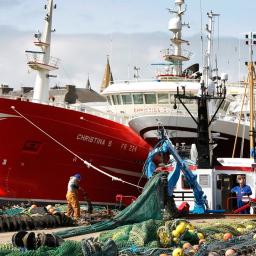 |
by Severin Carrell in Fraserburgh, Steven Morris in N on (#1FKK3)
The EU referendum has united an often fractious industry, with skippers in ports from northern Scotland to Cornwall desperate to dump imposed quotasWilliam Whyte has a new flag flying from the rigging of his vast blue-hulled trawler, its fabric snapping in the brisk breeze coming in off the North Sea. It features the cartoon of a militant-looking fish wearing armour, a union jack shield at its waist and the legend “Fishing for Leaveâ€.
|
| Link | http://feeds.theguardian.com/ |
| Feed | http://feeds.theguardian.com/theguardian/environment/rss |
| Updated | 2025-11-12 08:00 |
 |
by Joshua Robertson on (#1FKBG)
Shooting safaris should be allowed to control the reptiles’ numbers, which had ‘exploded’, says MP Bob Katter, criticising rival Warren Entsch for saying ‘You can’t legislate against human stupidity’A suspected fatal crocodile attack on a missing tourist in Australia’s far north-eastern wilderness has revived a perennial dispute about how to deal with a protected predator.Photographer Cindy Waldron was reportedly taken by a saltwater crocodile during a moonlight walk through shallow water at a beach in Queensland’s Daintree national park on Sunday. Continue reading...
|
 |
by Ashley Cooper www.globalwarmingimages.net on (#1FK7G)
Photographs from the Eyewitness series Continue reading...
|
 |
by Mark Cocker on (#1FJQ3)
Tara national park, Serbia The extraordinary thing is not how comfortable local people are around bears but how they live in almost parallel worldsSitting in a forest hut for three hours watching a glade fill with shadows tests to the limits all that modern life has made of us, especially our capacities for patience, stillness, silence.Not that I expected the objects of our vigil to reciprocate. On the contrary, brown bears in this park can be 250kg, so I was assuming that they might give warning of their approach: inadvertent rustling perhaps, or anxious alarm calls from nearby birds. Not a bit of it: what was so affecting was how the bears brought the stillness with them. On one occasion an animal walked right by us and while just 4 metres away we heard nothing. Continue reading...
|
 |
by Guardian Staff on (#1FJH4)
Greens leader Richard Di Natale criticises Labor and the Coalition for their commitments to new coalmines, accusing them of taking huge donations from the fossil fuel lobby and harming the future of renewables on ABC’s Q&A program on Monday. When asked about his plans for central Queensland, Di Natale says: ‘I tell you what we won’t be doing is opening up a new coalmine and killing the Great Barrier Reef.†Continue reading...
|
 |
by Michael Slezak on (#1FJED)
The full draft of the Unesco report on climate change reveals many mentions of Australia were actually positiveGreg Hunt has conducted one of the strangest manoeuvres of his already rather gymnastic career, over the erasure of Australia from a United Nations report on climate change.Guardian Australia had broken the story that all mentions of Australia and the Great Barrier Reef had been scrubbed from the report at the request of the environment department. Continue reading...
|
 |
by Paul Karp on (#1FJ8X)
Resources minister says candidates are challenging Bill Shorten’s authority on coal and Adani’s Carmichael mineThe resources minister, Josh Frydenberg, has taken aim at a number of outspoken Labor candidates who oppose new coalmines and called on Bill Shorten to clarify the party’s position.The Courier-Mail has reported Labor’s candidate for North Sydney, Peter Hayes, tweeted: “[Australia’s] defence of coal mining and export is in the same league as heroin poppy cultivation and exports elsewhere!†Continue reading...
|
 |
by Max Opray on (#1FJ3A)
Polling indicates 71% would be more likely to vote for a party that supported distributed small-scale solar and storageBattery storage technology has the potential to reshape not just the energy and transport sectors but also the upcoming Australian federal election, according to a new report.The Australia Institute report Securing Renewables: How Batteries Solve the Problem of Clean Electricity includes polling indicating that 71% of Australians would be more likely to vote for a party that supported distributed small-scale solar and storage. Continue reading...
|
 |
by Joshua Robertson on (#1FHVP)
Labor’s Terri Butler and the Coalition’s Steve Ciobo turn on Greens leader after he describes their commitment to coalmines ‘the great tragedy’The commitment by both major parties to new coalmines that threaten the Great Barrier Reef was “the great tragedy†of Australian politics, Greens leader Richard Di Natale told the ABC’s Q&A program on Monday.Di Natale, who was forced to defend the role of his party from both Labor and Coalition rivals, who branded him “arrogantâ€, linked fossil fuel donations to the two major parties to the economic woes now felt in regions like central Queensland. Continue reading...
|
 |
by Gareth Hutchens on (#1FHRJ)
The Australian Conservation Foundation’s assessment of the parties’ policies awards the Coalition 11 points out of 100, Labor 53 and the Greens 77The Australian Conservation Foundation has described the Coalition’s environmental policies as “woefully inadequate†in its traditional election scorecard.It gave the Coalition 11 points out of a possible 100, Labor 53 and the Greens 77. Continue reading...
|
 |
by Guardian Staff on (#1FH78)
Officials in Thailand take three tigers away from a Buddhist temple during a raid over wildlife trafficking claims. The tigers are tranquilised and taken away on stretchers to be transferred to a state-owned sanctuary. Dozens of tigers remain at the temple in Kanchanaburi province, and tourists are seen taking selfies with the big cats. The temple claims it is a wildlife sanctuary, but authorities are investigating it for animal trafficking and abuse Continue reading...
|
 |
by Damian Carrington on (#1FH6H)
Data released to Greenpeace in response to FoI requests show number of prosecutions has dropped significantly in recent yearsFar fewer pirate fishermen are being caught in English and Welsh waters, with prosecutions, warnings and inspections all plummeting in recent years following cuts at the enforcement agency.The reduction in action against illegal fishing, a multimillion-pound activity, is putting marine life at risk and allowing “blackfish†to become a normal catch for some rogue operators, according to experts. Those convicted of major fishing crimes are also free to continue fishing afterwards. Continue reading...
|
 |
by Guardian Staff on (#1FH3X)
A worried mother elephant looks on as her calf is rescued by wildlife officials in Sri Lanka, after it fell into an open drain. Rescuers in the town of Hambantota fire smoke bullets to keep her from coming too close while they dismantle the drain and pull the calf to safety Continue reading...
|
 |
by Terry Macalister on (#1FH2V)
Expert criticises ministers over refusal to disclose agreement with energy supplier for planned nuclear plant
|
 |
by Reuters in Kanchanaburi on (#1FGXY)
Officials remove three animals following raid at temple, which has been investigated for animal abuse in recent yearsWildlife authorities in Thailand have raided a Buddhist temple where tigers are kept, taking away three of the animals and vowing to confiscate scores more in response to global pressure over wildlife trafficking.
|
 |
by Johnny Langenheim on (#1FGSV)
The new Tun Mustapha marine park & shark sanctuary in Borneo is the biggest marine protected area in MalaysiaMalaysia has just established the biggest Marine Protected Area (MPA) in the country. The Tun Mustapha Park (TMP) occupies 1m hectares (2.47m acres) of seascape off the northern tip of Sabah province in Borneo, a region containing the second largest concentration of coral reefs in Malaysia as well as other important habitats like mangroves, sea grass beds and productive fishing grounds.It is also home to scores of thousands of people who depend on its resources – from artisanal fishing communities to the commercial fisheries sector – making it in many ways a microcosm of the entire Coral Triangle bioregion, where environmental protection must be balanced with the needs of growing coastal populations. Continue reading...
|
 |
by Arthur Neslen on (#1FGSX)
Farming minister George Eustice says leave vote would free up £2bn now spent on insurance schemes and incentives for farmersThe UK could develop a more flexible approach to environmental protection free of “spirit-crushing†Brussels directives if it votes to leave the EU, the farming minister, George Eustice, has said. Continue reading...
|
 |
by Guardian Staff on (#1FGQD)
Footage shows collapsed buildings and cars buried under rubble, following violent storms that caused severe flooding in southern Germany on Monday. Four people have died and several more are injured. The scenes are from the streets of Braunsbach, which according to German media, have been strewn with debris after two streams burst their banks and unleashed floodwaters that brought down one house and damaged several other. Photograph: REUTERS/Kai PfaffenbachFour dead after severe floods hit southern Germany Continue reading...
|
 |
by Rose George on (#1FGJD)
Thanks to the likes of Menstrual Man periods are now out in the open: now it’s time to be equally bold about the waste problem posed by millions more padsMuruga reaches down and puts a sanitary towel between his legs. It’s actually a postpartum pad for women who have just given birth, and who don’t use underwear, hence the ingenious elastic loop that holds the pad in place.Muruga’s full name is Arunchalam Muruganantham but he is better known as Menstrual Man. He is a one-off, and his story is enchanting: who else would have tested their own sanitary pad design by taking a football bladder, filling it with goat blood, then wearing it for weeks? “I became like a woman,†he tells me in his factory in Coimbatore, in the southern state of Tamil Nadu. “Always checking behind me, to check for staining.†Continue reading...
|
 |
by Patrick Barkham on (#1FGE5)
The Springwatch presenter’s revelation may seem a tad unpalatable, but he is sending an important message to parents about children’s encounters with natureAs celebrity revelations go, it’s one of the more unusual: as a boy, Chris Packham would decant tadpoles on to a special spoon and eat them.The naturalist and Springwatch presenter reveals his tadpolephagy in his new memoir, Fingers in the Sparkle Jar, and he’s not sorry either. They are gritty and tricky to chew, Packham reports, comparing them to watery semolina with a bit more “thrashing†under the tongue. Continue reading...
|
 |
by Agence France-Presse in Berlin on (#1FGBF)
Girl of 13 who was struck by a train while sheltering from the rain and volunteer firefighter among those killedFour people died and several more were injured in southern Germany after violent storms with torrential rains caused severe flooding, authorities said.
|
 |
by John Vidal on (#1FG35)
Scientists say sea temperatures are back to normal, but from southern Africa to southern Asia, droughts and heatwaves have left a trail of devastationThe strongest El Niño in 35 years which has seen long droughts, scorching temperatures, water shortages and flooding around the world is officially over. But the consequences of a second year of extreme weather will be seen for many more months in food shortages for nearly 100 million people, the loss of income for millions of poor farmers and higher prices in cities, say the UN and leading meteorologists.According to Australian and US government scientists, sea surface temperatures in the Pacific, which warm significantly every few years, have cooled to normal levels and are unlikely to rise again this year. This marks the end of an 18-month global weather hiatus which has created social and ecological turmoil in Asia, Africa and Latin America. Continue reading...
|
 |
by Adam Vaughan in Lewa and Nairobi on (#1FFX4)
In a country hit by a devastating poaching surge for rhino horn and elephant ivory, local people are turning the tide – but the wider problems of demand, corruption and organised crime remain“It’s hard work. I cut their tusks off with an axe,†said Abdi Ali, a northern Kenyan pastoralist who became a full-time poacher at 14. With three other men it took him about 10 minutes to kill each of the 27 elephants he poached, cutting off the trunk, splitting the skull and removing the ivory that would later fetch 500 Kenyan shillings (£3) a kilo.
|
 |
by University of Bristol/PA on (#1FFW4)
Photographs from the Eyewitness series Continue reading...
|
 |
by Elle Hunt on (#1FFSC)
Election 2016: as polls remain close the question of a hung parliament comes up again – and earlier outright denials are softeningHow about this for an alternate reality? A normal election campaign would be starting today. As it is, welcome to week four – we’re nearly, almost, oh-so-close to the halfway mark, and the question of a hung parliament is back on the table.The finance minister, Mathias Cormann, the foreign minister, Julie Bishop, the treasurer, Scott Morrison, and the prime minister, Malcolm Turnbull, have weighed in on the hypothetical as poll analysis shows the government could lose up to 16 seats in just three states. Continue reading...
|
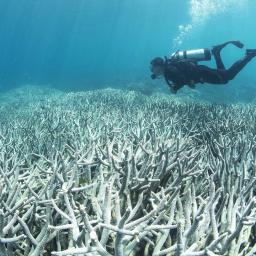 |
by Graham Readfearn on (#1FFGN)
Australia’s iconic Great Barrier Reef is clearly at risk from climate change, so why would Unesco agree to censor its own report?That quote from Shakespeare’s Hamlet comes to mind: “The lady doth protest too much, methinks.â€The lady in question is the Australian government, which some time in early January saw a draft of a report from a United Nations organisation. Continue reading...
|
 |
by Staff and agencies on (#1FFFS)
The suspected male buck jumped on to Sharon Heinrich and her friend when they paused on a cycle tour of the Reisling Trail in Clare ValleyTwo women have been attacked by a kangaroo while cycling in South Australia’s wine country.Sharon Heinrich, 45, suffered cracked ribs and internal injuries while Helen Salter, 47, was concussed after being attacked along the Riesling Trail in Clare Valley. Continue reading...
|
 |
by Simon Ingram on (#1FFDB)
Castor Hanglands, Cambridgeshire I listen for 30 minutes, imagining this delicate thing inhaling, exhaling, creating that soundIt’s odd going somewhere to listen. Usually you go somewhere to look. I’d never knowingly heard a nightingale. The word is so resonant. It’s maybe 1,000 years old, that name: nihtgale, “night songstress†– but now they know it’s the male that sings so distinctively by dark, to defend and attract. I’d always thought the name elegantly, evocatively, benignly crepuscular. Probably I’d heard it passively. But I’d never gone somewhere to find it.Knowing little of birds, I had to be told where and when to listen. “Dusk and into dark, and you’ll hear the nightingales. You’ll know it because nothing else will be singing.†Continue reading...
|
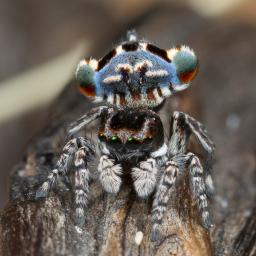 |
by Guardian Staff on (#1FF9A)
Several new species of peacock spider – just a few millimetres long and featuring extraordinary colours – have been discovered in Western Australia and South Australia. Sydney biologist Jürgen Otto, who discovered the seven new species, has compared their behaviour to that of cats and dogs Continue reading...
|
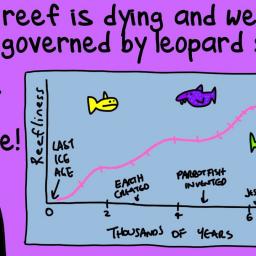 |
by First Dog on the Moon on (#1FF3Z)
Every reference to the Great Barrier Reef was removed from a UN report on the impact of climate change on tourism and World Heritage sites after ‘intervention’ from the Australian government. What is going on?
|
 |
by Elle Hunt on (#1FF3K)
Autumn figures are likely to be warmest on record, but Sydneysiders wake up to frosty morningSeveral sites in Sydney have experienced their coldest May morning in 20 years, even as the city looks set to record its warmest autumn.Less than two weeks after well above average temperatures were recorded across the eastern states, Sydneysiders awoke to record cold weather and frost on Monday. Continue reading...
|
 |
by Max Opray on (#1FEYC)
As cities expand and trees are sacrificed for housing and infrastructure, the cost of losing green spaces grows
|
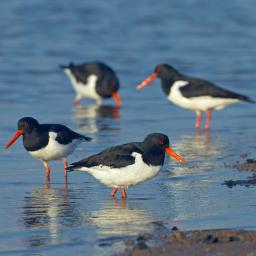 |
by Thomas Coward on (#1FEJY)
Originally published in the Manchester Guardian on 2 June 1916Although we could not see them, shoals of small fish raced seaward on the falling tide, hastening through the shallowing water on the banks; the terns, however, could see them, and, following in a dense, screaming crowd, literally fell upon them. Out of the mass of noisy hovering birds a score or more at a time dived head-long, splashing up the water as they struck. Nearer shore, where the water runs in channels between the rocks and banks, the lesser terns were feeding in smaller numbers, and one amorous male carried his squirming captives to his mate upon the shore. A mob of pied oystercatchers lined the edge of the water, and now and then a whimbrel, with rippling call, flew down to join them.Where the sand was dry the ringed plovers fed, where still wet the dunlins ran, probing the mud, and wading till the water washed their breasts were a number of short-billed sanderlings. Turnstones, some gay in the black and orange dress of summer, tossed the seaweed strands with their slightly upturned and stout bills; they knew where to find the lurking crab and sand-hopper. Continue reading...
|
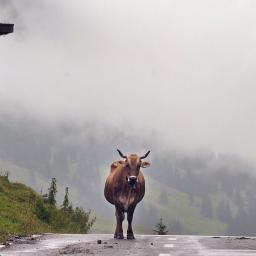 |
by Gary Fuller on (#1FEFN)
Leakage of natural gas from drilling and pipework means more methane is entering the atmosphereOne of the justifications for fracking is the use of natural gas as a bridging fuel between coal and a low-carbon future. However natural gas is mostly methane, which has strong global warming impacts in its own right. Natural gas therefore only provides climate benefits over coal if the leakage is no more than 2-3%.We cannot measure leaks from every pipe joint. One alternative is to measure the sum of lots of leaks from a distance. Flights over US shale gas fields reveal large methane sources, but these areas also have cattle farms that produce methane and the two sources need to be separated. Continue reading...
|
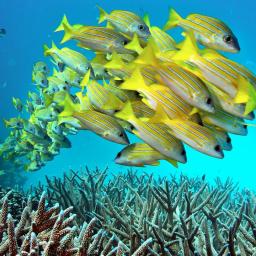 |
by Gareth Hutchens on (#1FED7)
Extra cash for scientific monitoring and management promised by Bill Shorten to support one of party’s ‘highest priorities’Labor is promising to invest $500m to boost scientific monitoring and management of the Great Barrier Reef over five years as it unveils its biggest environmental policy of the election campaign so far.
|
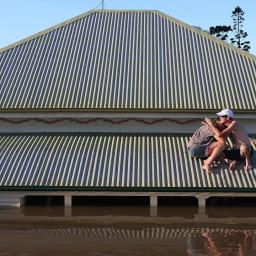 |
by Melissa Davey on (#1FED5)
Climate Institute says risk data held by regulators, state and local governments, insurers and banks, but homebuyers and developers do not have access to itThe risk that houses in some areas of Australia are likely to become uninsurable, dilapidated and uninhabitable due to climate change is kept hidden from those building and buying property along Australia’s coasts and in bushfire zones, a Climate Institute report says.The report says there is untapped and unshared data held by regulators, state and local governments, insurers and banks on the level of risk, but that most homebuyers and developers are not told about the data and do not have access to it. Continue reading...
|
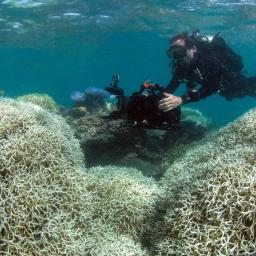 |
by Michael Slezak on (#1FED9)
As mass bleaching sweeps the world heritage site, scientists also find an average of 35% of coral dead or dying in the northern and central sections of the reefThe majority of coral is now dead on many reefs in the central section of the Great Barrier Reef, according to an underwater survey of 84 reefs, in the worst mass bleaching event to hit the world heritage site.An average of 35% of coral was now dead or dying in the northern and central sections, according to the surveys led by the Australian Research Council’s Centre of Excellence for Coral Reef Studies. Continue reading...
|
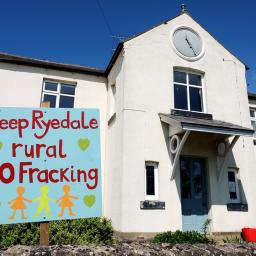 |
by Letters on (#1FE9X)
There is a whole generation of women out here who were protesters at Greenham Common, Aldermaston, and the Newbury Bypass (Anti-Fracking groups plan protest camps, 26 May). Besides working with our partners to help our children carve out a life in a horribly hostile financial climate, we are volunteering on committees to help keep youth and children’s centres, libraries, and village halls open, because council budgets are totally inadequate. In our 50s, 60s and 70s, we are supporting the junior doctors, standing against welfare cuts, and for renewable energy. We want this government to publish the report, which they have been sitting on since the end of March, on the Environmental Impact of Shale Gas Technology, by the independent Climate Change Committee. Yes, I think there will be anti-fracking camps like Balcombe here in the north. I think there might be all sorts of imaginative social disobedience. We’ve been round the block already, and demographics show that our age group is growing. Even if we didn’t get to Greenham Common, there are quite a lot of us who might make up for it in Kirby Misperton, Preston New Road, or Roseacre Wood.
|
 |
by Letters on (#1FE9J)
Opium of the masses | Christ’s resurrection | Land Registry | Breastmilk for adults | Kitty for Titty | Pork not a verbAll that Giles Fraser (The world is getting more religious, because the poor get God, 27 May) has managed to say in 700 words is that religion is indeed the opium of the masses and sadly, in an increasingly unequal world, people will turn to myth and superstition to comfort them in their impotence to do anything about it.
|
 |
by Helen Pidd North of England editor on (#1FDXP)
After North Yorkshire allows test drilling, villagers in Misson are determined to stop the same happening in former bomber pilot testing groundWhen councillors in North Yorkshire ignored widespread public opposition and granted planning permission for the fracking company Third Energy to carry out test drilling, there were groans around the Nottinghamshire village of Misson.For the last two years, tenacious locals in this quiet fenland hamlet have been fighting attempts by another energy firm to set up a shale gas exploration site in a nearby field. Continue reading...
|
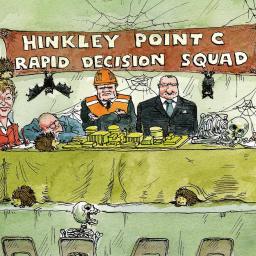 |
by Guardian Staff on (#1FCXQ)
Environmental protections on EDF’s troubled Somerset construction site are excellent, apparently. Very little else about the project isHave you heard about the terrific bat houses and hedgehog tunnels down at Hinkley Point in Somerset? Energy minister Andrea Leadsom has been to inspect them herself and raved about them last week to a select committee of MPs. They were evidence, she suggested, of the depth of commitment of French firm EDF to the £18bn nuclear power station due to be built on the site.Well, maybe. Talk of bats and hedgehogs at least provided some relief from the familiar crop of Hinkley news. French economy minister Emmanuel Macron said he was “fully behind†the project but EDF’s unions confirmed that they weren’t. Jean-Luc Magnaval, secretary of EDF’s workers’ committee, told the BBC that the unions “have reservations about several aspects of the project: organisation, supply chain, installation and procurementâ€. That’s a long list. Continue reading...
|
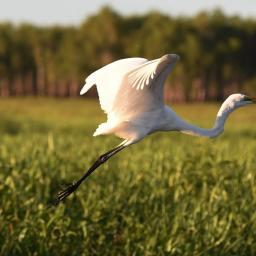 |
by Michael Slezak on (#1FCXS)
Fears about damage to the Great Barrier Reef were removed from UN report along with concern about a threat to the environment in two other heritage sitesA draft UN report on climate change, which was scrubbed of all reference to Australia over fears it could deter visitors to the Great Barrier Reef, also outlined possible threats to the Tasmania wilderness and Kakadu. Continue reading...
|
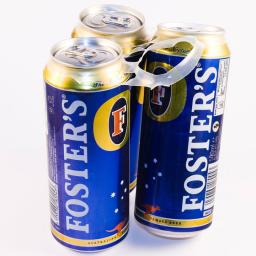 |
by Maxine Perella on (#1FCSB)
Discarded plastic six-pack rings trap and kill fish and other sea life. Could holders made from wheat and barley be an animal-friendly alternative?
|
 |
by Kit Buchan on (#1FCRN)
In the first of a series, we visit the Hellisheiði plant, which provides 300MW of power – and Reykjavik’s hot waterThanks to its position on a volatile section of the Mid-Atlantic ridge, Iceland is a world leader in the the use of geothermal energy, and of the six geothermal power plants in Iceland, Hellisheiði (pronounced “het-li-shay-theeâ€) is the newest and largest. Fully operational since 2010, it sits on the mossy slopes of the Hengill volcano in the south-west of the country; a green and placid-looking landscape that belies the turbulent geological activity rumbling beneath it.To access the potential energy under the surface, wells are drilled thousands of metres into the ground, penetrating reservoirs of pressurised water. Heated by the Earth’s energy, this water can be more than 300C in temperature, and when released it boils up from the well, turning partly to steam on its way. At Hellisheiði, the steam is separated from the water to power some of the plant’s seven turbines, while the remaining water is further depressurised to create more steam, used to power other turbines. At its maximum output the station can produce 303MW of electricity, making it one of the three largest single geothermal power stations in the world. Continue reading...
|
 |
by John Vidal on (#1FCNS)
Female opposition to drilling soars as mothers unite in desire to safeguard children’s future“We are ready for them,†said Tina Louise Rothery. “It has been a long battle but we have been ready for a confrontation for a long time.â€Rothery is one of a growing group of women at the forefront of opposition to fracking. Of the 250 anti-fracking community groups that have sprung up in Britain in the past few years, very many are led, or strongly backed, by women, who say they have been outraged at plans to risk people’s health by exploiting the countryside for shale gas. Continue reading...
|
 |
by Lucy Siegle on (#1FCJX)
Time to help the creatures that, wrested from habitats where they swim thousands of miles, end up atrophying in tanksWe need to talk about Dory. As Pixar’s charming version of a tropical blue tang swims on to screens in Finding Dory next month, conservationists fear a wave of inappropriate fish buying.Finding Nemo, which triggered just such a global craze in 2003, posed less of a threat. Clownfish (Nemo’s ilk) are usually bred in captivity for the aquarium trade, but blue tangs are “harvested†from the wild for aquariums, with up to 80% dying during capture and transportation. There is intense pressure on wild populations, especially around coral reefs. Continue reading...
|
 |
by Associated Press in Flint, Michigan on (#1FB7B)
|
 |
by Guardian Staff on (#1FB1A)
Deep sea scientists exploring the remote waters between Hawaii and Midway atoll find a gigantic sea sponge “about the size of a minivan†that could be the oldest animal on earth. A remote-operated submersible found the sponge about 2,100m (7,000ft) down, while exploring the depths of the PapahÄnaumokuÄkea marine park Continue reading...
|
 |
by Alan Yuhas on (#1F9KV)
|
 |
by Guardian Staff on (#1FA7Q)
Mega dam on Congo river to produce electricity equal to 20 large nuclear power stations, but critics say it will displace 60,000 people and wreck the ecosystemThe largest dam in the world is set to begin construction within months and could be generating electricity in under five years. But 35,000 people may have to be relocated and it could be built without any environmental or social impact surveys, say critics.The $14bn (£9.5bn) Inga 3 project, the first part of the mega-project, is being fast-tracked by the Democratic Republic of Congo government will span one channel of the vast river Congo at Inga Falls. It involves a large dam and a 4,800MW hydro-electric plant. Continue reading...
|